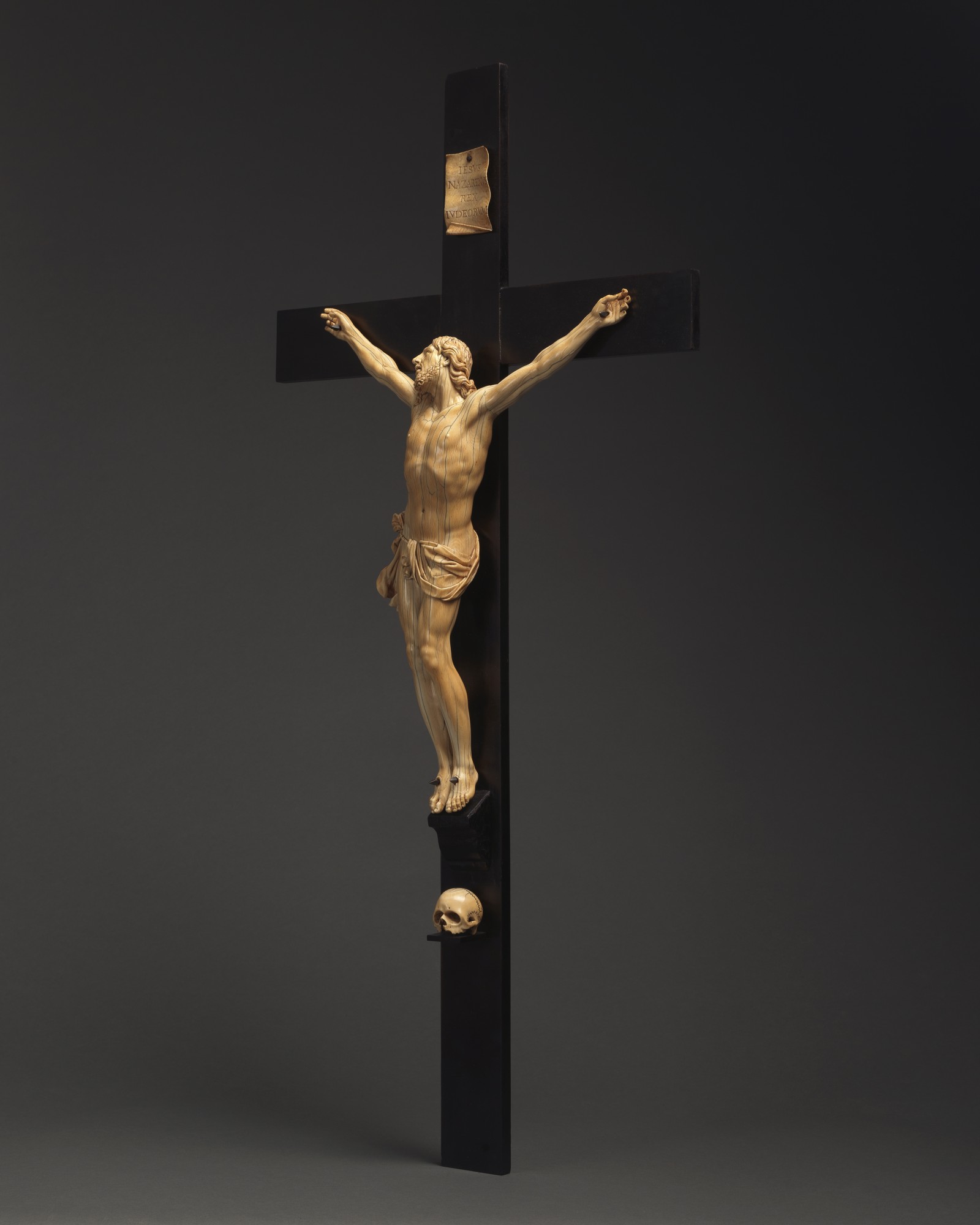


Cross
Private collection, Belgium
Musées Royaux d'art et d'histoire and Musées Royaux des beaux-arts de Belgique, La sculpture au siècle de Rubens dans les Pays-Bas méridionaux et la principauté de Liège, exhibition catalogue (Musée d'art ancien, Bruxelles, 15 July – 2 October 1977), pp. 321-338, figs. 294, 297, 304, 309
His torso unmarked by the spear of Longinus, Cristo Vivo (‘The Living Christ on the Cross’) hangs, arms outstretched and slightly bent, sacrificing himself on the cross to redeem mankind.
This exquisite and evocative Corpus Christi is notable for its exceptionally finely carved detail. The craftsmanship evident in the smallest curls of Christ’s locks, his beard, his open mouth displaying teeth and tongue, his heavy eyelids and furrowed brow, the veins and sinews of his neck, arms and feet, the musculature of his arms and legs, the knuckles and joints of the fingers and toes, the fingernails and toenails and the flowing folds of his perizonium (loin cloth) and twisted single rope tie is reflective of the highest skill and quality. The feet rest on the suppedaneum, each foot pierced by a nail, the skin around the wounds gathered. Christ directs his gaze towards the heavens and to God, his features expressive of both sorrow and submission. Beautifully proportioned, this refined devotional work conveys the agony and exhaustion of the crucifixion yet still leaves the viewer with a sense of serenity.
The Saviour hangs on an associated wooden cross, above him an ivory titulus inscribed in Latin, ‘Iesvs Nazarenvs Rex Ivdeorvm’ (Jesus of Nazareth, the King of the Jews). The letters ‘INRI’ are initials for the Latin title that Pontius Pilate wrote over the head of Christ on the cross (John 19:19).
At the base of the cross is positioned an ivory skull. Conventional wisdom suggests two interpretations of the significance of this addition to crucifix. On one view, the skull represents Adam, through whom death came into the world, below the feet of the last Adam, Christ, through whom eternal life was given. His blood, the blood of salvation, ran down the cross onto the skull of Adam below, washing away the sins of man. Christ is, and hangs above, our mortal sin. The second explanation is that the skull is a reference to the hill on which Christ was crucified, Golgotha (Calvary) or ‘The Place of the Skull’. This is where Adam was reportedly buried and Christ was crucified where he lay, the cross having been raised directly over Adam’s skull.
SOLD: Private collection, United Kingdom